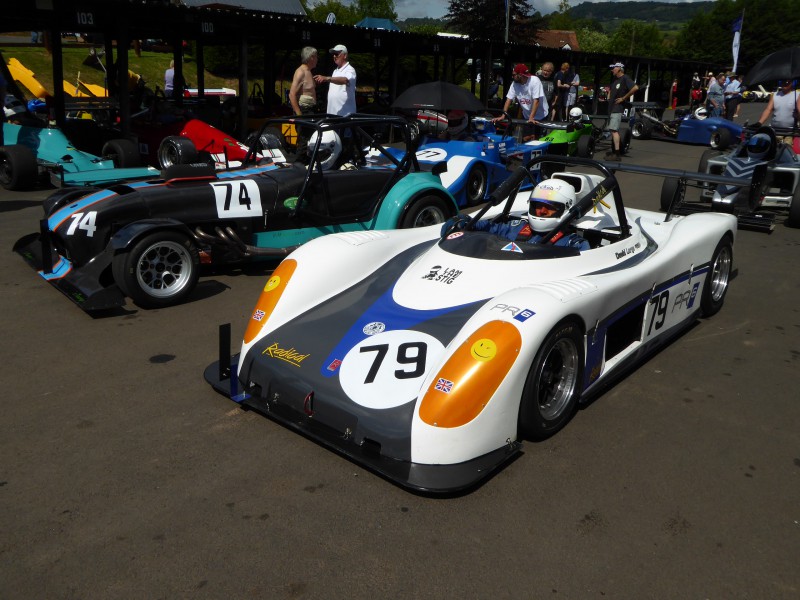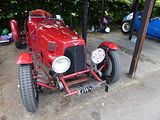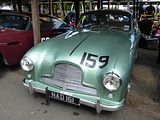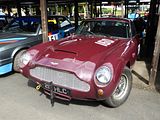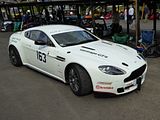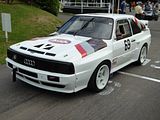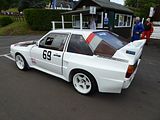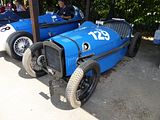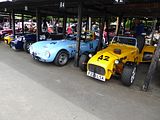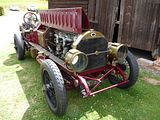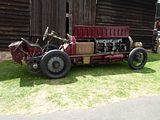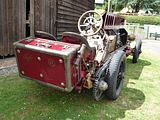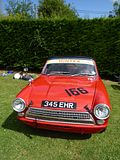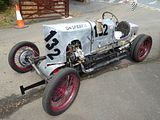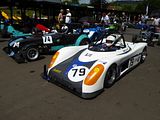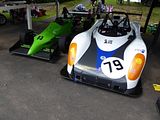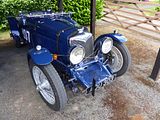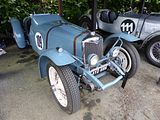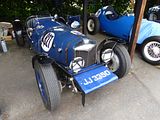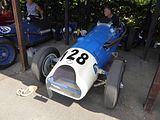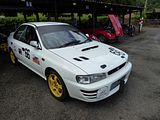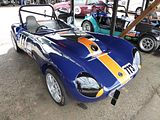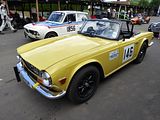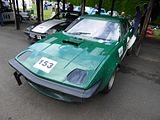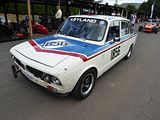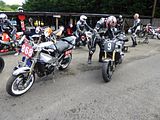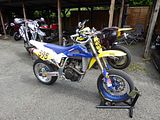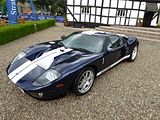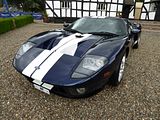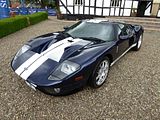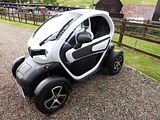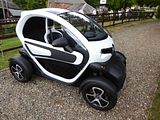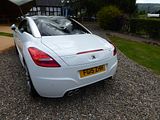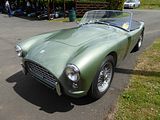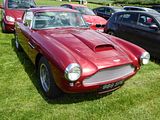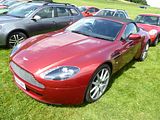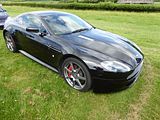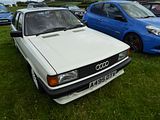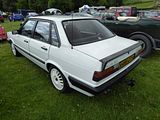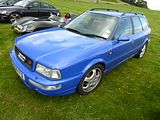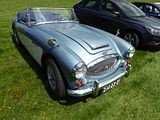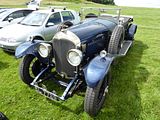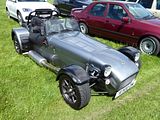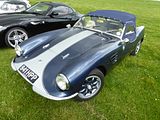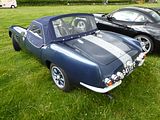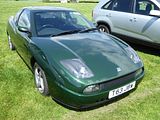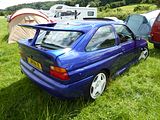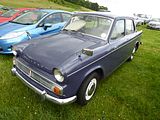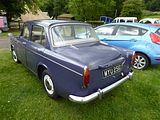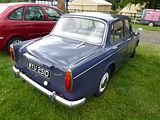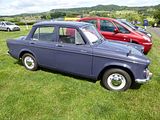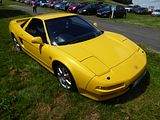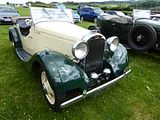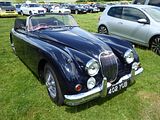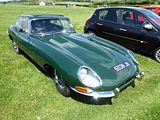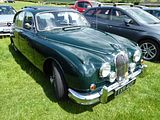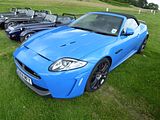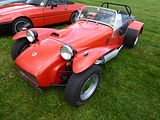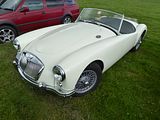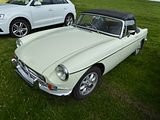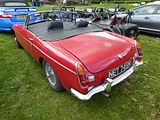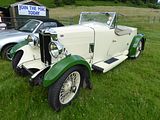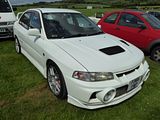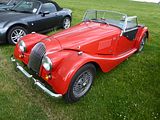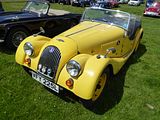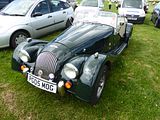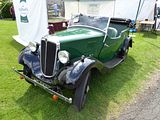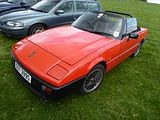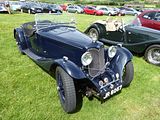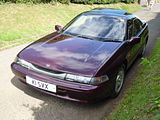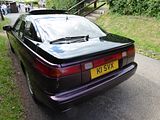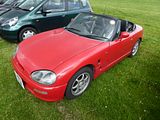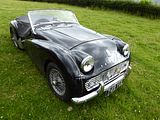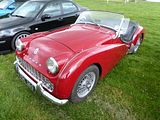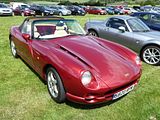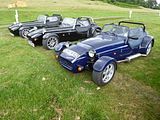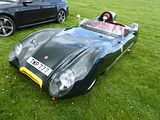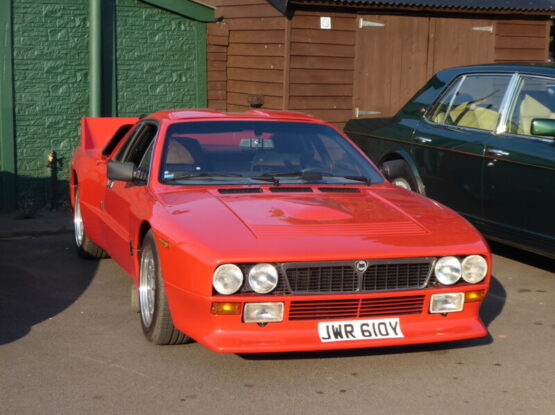With intense competition between the vast number of car-related events to get a paying public to come, more or less every weekend of the year, most venues have found that they need to find something headline grabbing to persuade people to give them their loyalty. And so, long established venues, such as Shelsley Walsh, the oldest location for motorsport, with a history of competition on the hill going back to 1905, has had to resort to special branding for many of the events scheduled throughout their year. However, they clearly have not completely forgotten their roots, so there are still plenty of what you could characterise as “club” meetings in their busy calendar, too. The event held over the first weekend of July starts off like this, on the first Saturday of the month, before the VSCC arrive en masse for their meeting at the venue on the following day. I love the VSCC meetings, and I really wanted to attend the 2015 Shelsley gathering, but in the interests of trying something different, this was a year where I decided to go elsewhere on the Sunday, but as my diary was still clear for that Saturday, I decided to go along and enjoy what you might call a grassroots day of enthusiasts competing.
IN THE PADDOCK
This meeting is in fact the Reg Phillips Trophy meeting, named after the prolific builder of hill climb specials in the fifties and sixties, who as well as being a forceful competitor, was a long time Committee member of the Midlands Automobile Club as well as a generous benefactor to the Club. This particular meeting attracts the club competitor and features classes in a number of Championships including the Service Hydraulics Speed Championship, the Northampton Motorsport Speed Series, the Aston Martin Owners Club Speed Series, the TR Register Speed Championship and the NSCC Speed Championship, as well as a a small class representing the Historic Rally Car Register. That means that there is a massive variety in the type of cars competing at this event, with everything from pre-war vintage cars, in some cases worth very large sums of money indeed, to purpose built racers and hill climb cars of far more recent times. Unlike most other venues, Shelsley does not call cars to go up the hill in strict sequential order, or even by class, preferring instead to mix things up, with cars being summoned to the start line individually. It certainly does provide more variety over a window of watching by doing things this way, and it means you have to concentrate more carefully on the commentary or watch the timing boards if you want to see the results of a particular class. There were lots of classes, in most cases with only a handful of competitors in each. Every competitor got two practice runs during the morning, before the competitive runs started during the afternoon. Shown below are just some of those competitors.
Among the Aston Martins entered were everything from a 1930s International through the 1950s and a couple of 1950s DB2-4s, a DB5 and a recent V8 Vantage
Following the initial success of the Quattro, Audi made a new version in 1984, called the Sport Quattro with a revised body, with a shorter wheelbase and more upright windscreen, as well as a number of mechanical changes aimed at making the car even more competitive. A limited number were made for the road and these cars are highly prized now. Several conversions have been made, so sometimes when you see what you think is a genuine car, it turns out not to be. I suspect that this is a case in point. It still sounds absolutely epic, though!
It did not take long after the 1922 launch of Herbert Austin’s diminutive little Seven for enthusiasts to spot the potential for the car in motorsport. Austin offered their own sporting versions, such as the Nippy, and many people resorted to creating their own bodies to put on the familiar Austin chassis. Even now, these cars are popular in grass roots motorsport, and it is not uncommon to come across a whole class of them competing. There was just the one at this event, a Nippy.
More recently, of course, it is cars like the Caterham which provide a relatively affordable entry point into motorsport, so it was no surprise to come across a whole class of these cars competing.
Not actually competing today., the car that was attracting more interest than any other was Michael Vardy’s amazing Isotta Fraschini engine 1905 Fiat. Since making its public debut in mid 2014, this incredible automobile has been seen at lots of different events, and it never fails to draw a crowd. Conceived in 1905, this Fiat 20HP, to give it a full title is over 17 feet long and weighs nearly 2 tonnes. It features a vast Isotta Fraschini-designed 16.5 litre aero engine which occupies almost the entire length of the car, and was originally designed for an attempt on the World Land Speed Record 110 years ago. Fiat never actually built it in period, so in fact it has only recently been completed, albeit using all original parts. It is often fired up and I have seen in action many times this year – definitely worth looking out for.
This Ford Cortina Mark 1 GT was entered by the Historic Rally Car Register and was competing against a couple of Mini Coopers in its class.
The GN was a British cyclecar made in London, between 1910 and 1925, The name derived from its founders, H.R. Godfrey and Archibald Frazer-Nash. Production ceased in 1923 but the company kept trading until 1925. After making several cars for their own use, the two founders launched the GN car in 1909, building them in the stables at the Frazer Nash family home. The car was powered by a V twin engine by JAP or Peugeot with belt drive to the rear wheels. By 1911, production had moved to Hendon and GN’s own 1100 cc engine, using some Peugeot parts being fitted. The engine was mounted in the chassis with the crankshaft parallel to the front axle, driving through a two-speed transmission by chain and dog clutch, then by belt to the rear wheels. The two-seat car was very light, weighing only about 180 kg. Therefore, in spite of the low power available, 60 mph was achievable, which was very respectable performance for the time. The engine was turned 90 degrees in 1913, with its cylinder heads protruding through the bonnet sides, and a team was entered into the French Cyclecar Grand Prix resulting, in sports models being added to the range. Some 200 cars had been made when production stopped with the outbreak of World War I. Production restarted in 1919, and shortly afterward the company was bought by British Grégoire Ltd and moved to East Hill, Wandsworth in south west London. The chassis changed from wood to steel, with the chain type transmission now with three speeds and reverse. At the peak, 500 staff were employed, making 55 cars a month. A licence to make the cars was agreed with the French maker Salmson who made about 1600 cars. By 1921, the cyclecar boom was on the wane and the company went into receivership, but was soon sold. The new owner, a Mr Black, wanted to move to much higher production levels and away from sports cars. A four-cylinder water-cooled model with 1098 cc DFP engine and shaft drive to a differential on the solid rear axle was introduced in 1922 as part of the new policy, and Godfrey and Frazer Nash left the company later that year. In 1923 a Chapuis-Dornier engine replaced the DFP, but production of the new car and the old V twin model stopped in May. About 4000 cars of all types were made by GN in the post war period. These days it is the handful of GN Specials that were created, each of them one-off cars purposed built for hill-climbing, which are the best known, as many of them can be seen in actions at events like this. It was GN Spider II which was here, and – thanks to some exuberant and gutsy driving – it posted some of the fastest times of the day.
This 3 wheeler Morgan Super Aero has a 1260cc engine.
Radical Sportscars was founded in January 1997 by amateur drivers and engineers Mick Hyde and Phil Abbott, who built open-cockpit sportscars which could be registered for road use and run on a track without modification. Although most of Radical’s sportscars are road legal, the majority of cars they build are only ever seen on the track or the hills, and some of their offerings are purpose-built for motorsport, such as the SR9 Le Mans prototype There have been quite a number of different models in the less than 20 year history of the company. with 7 different cars currently offered. This is a PR6, a car which is a close relative to the SR1, which has proved popular enough that there is a one-make championship specifically for the model.
In the 1930s, the Riley was popular not just as a sporting car for road use, but also for competition and accordingly as well as regular production models like the TT Sprite depicted, there were large number of Specials were made, a few which were entered here including this 2.4 Special, as well as a Riley-Rowson, which the entry forms say dates from 1933.
This Subaru Impreza STi had a bored out engine, cited at 2350cc, and was accordingly competing in the Over 2000cc Roadgoing Series Production Car Class
There were a couple of drivers competing in this Sylva Phoenix, an entrant in the class for Modified Specialist Production Cars
The majority of the cars in the TR Register Championship class were indeed TR cars and there were competitors from several different generations of the model entered, with several TR6s and a few of the later TR7/8 cars, but the Dolomite Sprint – a successful saloon car racer in its day – was also in the same class.
As well as four wheel competitors, there were in excess of 30 Motor Bikes, several complete with side car, members of the Hill Climbing Association who were competing for honours on the hill.
STRATSONE DISPLAY
The Stratsone Group own the cottage and surrounding land at the foot of the hill climb. You walk past i when going from the main public car park to the paddock area, and as Stratsone often use the grounds around the property to showcase some cars, it is always worth making a slight detour to see what they have brought along. On all previous occasions that I have visited, they have had Aston Martins or Jaguars and Land Rovers on show, but this time there appeared to be just one car to see. But when I saw what it was, I headed straight in for a closer look, as it was a Ford GT.
Curiosity getting the better of me, though, I went round the corner of the house, and found three more cars. All French, and very different from the usual Stratsone display material: a Citroen C4 Cactus, a Renault Twizy and Peugeot RCZ
Parked up even beyond them was something which turned out to be 101 years old. The grille threw me to start with, as it was not familiar, but this did indeed turn out to be a Model T Ford. A very original one, apart from the radiator which should be flat if it were to be as produced in Detroit in Henry’s factory.
IN THE CAR PARK
Although there were not masses of spectators at the event, which means that the main car park only occupied the area to the left of the entrance, the ratio of interesting cars to more commonplace stuff was pretty high, so a stroll up and down the lines of parked up cars was well worth it, yielding plenty of cars worthy of a mention and a photograph. Some are Shelsley “regulars”, in many cases with a Midlands Automobile Club members sticker in the car, but plenty of others were vehicles I had not seen here before.
AC
Precursor to the better known Cobra, was the AC Ace. Launched in 1954, and followed up in 1956 by a closed version called Aceca, the early cars used AC’s venerable 100 bhp 2 litre engine, but from 1956 there was the option of the 120 bhp 2 litre Bristol unit and later, from 1961, the 2.6 litre Ford Zodiac unit was made available, with some cars tuned to give up to 170 bhp. It was this that attracted the attention of one Carrol Shelby who thought he could do a whole lot better by installing a much larger engine. He did, and the result was the Cobra, a car which then kept the same basic lines of the Ace but which was quite heavily modified to cope with the extra power.
ASTON MARTIN
As well as a couple of recent Astons, namely a DB9 Volante and a V8 Vantage, there was an older DB5 also parked up.
AUDI
This 80 Sport is a regular at Shelsley. Considered a large family car when it was new, and sold only in relatively small volumes (like the 3 Series and Mercedes 190) as it was a lot more expensive than a Cortina or a Cavalier, the appeal of the model was stretched when more powerful engines, shared with the then Golf GTi were put under the bonnet. 115 bhp may not sound like much now, but it was a big deal back in the early 1980s!
That being so, even allowing for the increase in power (but also in weight) that occurred throughout the decade, what Audi did, in conjunction to create the RS2 Avant was little short of sensational. with a 315 bhp version of the familiar 2.2 litre 20 valve engine under the bonnet, giving this “Estate car” truly supercar like performance, with a 0-60 time of just 4.8 seconds. Of course, whilst the RS2 was based on the regular 80 Avant and used a lot of standard components, there was plenty that was modified in the engine, the 6 speed manual gearbox, and the chassis to make this the amazing car to drive that it was quickly apparent that it was. Although it was only planned to build 2200 examples, demands was such that 2891 cars were actually constructed between 1994 and 1996. Of these, only 180 were right hand drive cars built for the UK, New Zealand and South African markets, so this is a rare sighting in the UK.
The RS2, first Audi to bear the now legendary RS branding, was not the first car from the Ingolstadt marque which had changed the rules, as Audi had really stunned everyone with the March 1980 launch of the Quattro. Combining the all wheel drive system from the Iltis with a potent turbocharged 5 cylinder engine and a Coupe body with ample room for 4 adults meant that as well as a rally weapon that completed changed all the rules, Audi now had a serious contender to challenge the established order of performance Coupes and the brand previously known for making worthy but slight dull cars became highly aspirational. There was a very nice example of this important car here. I love it!
AUSTIN HEALEY
One of those evergreen classics that you rather expect to find at an event like this, the Austin Healey 3000, is as popular now as it always has been, and prices continue to rise, putting the traditional hairy-chested British sports car out of reach for a growing number of people.
BENTLEY
Two very different Bentleys were parked up: a classic 3 litre from the late 1920s and a modern Flying Spur
CATERHAM
Contrasting nicely with the Westfields which are presented lower down this report was this R300, one of the more potent models from the complex array of different cars that have come from the factory in recent years.
ELVA
With a name derived from the French “elle va” (She goes), Elva was a small British company based in Bexhill, founded in 1955, that made sports and racing cars. The main road car that the firm produced was the Courier. Introduced in 1958, it underwent a series of developments throughout the existence of the company. Initially all the cars were exported, home market sales not starting until 1960. Mark Donohue had his first racing successes in an Elva Courier winning the SCCA F Prod Championship in 1960 and the SCCA E Prod Championship in 1961. The Mk 1 model used a 1500 cc MGA or Riley 1.5 litre engine in a ladder chassis with Elva designed independent front suspension. The engine was set well back in the chassis to help weight distribution, which produced good handling but encroached on the cockpit making the car a little cramped. The chassis carried lightweight 2-seater open glassfibre bodywork. It was produced as a complete car for the US and European market and available in kit form for the UK market. After about 50 cars were made it was upgraded to the Mk II which was the same car but fitted with a proprietary curved glass windscreen, replacing the original flat-glass split type, and the larger 1600 cc MGA engine. Approximately 400 of the Mk I and II were made. The rights to the Elva Courier were acquired by Trojan in 1962, and production moved to the main Trojan factory in Purley Way, Croydon, Surrey. Competition Press announced: “Elva Courier manufacturing rights have been sold to Lambretta-Trojan in England. F-Jr Elva and Mark IV sports cars will continue to be built by Frank Nichols as in the past.” With the Trojan takeover the Mk III was introduced in 1962 and was sold as a complete car. On the home market a complete car cost £965 or the kit version £716. The chassis was now a box frame moulded into the body. Triumph rack and pinion steering and front suspension was standardised. A closed coupé body was also available with either a reverse slope Ford Anglia-type rear window or a fastback. In autumn 1962: the Elva Courier Mk IV was shown at London Show, with the latest car having all-independent suspension, a fibreglass body and an 1800cc MG engine as used in the new MGB. Later the Ford Cortina GT unit was available as well. The final version, the fixed head coupé Mk IV T type used Lotus twin-cam engines with the body modified to give more interior room. It could be had with all independent suspension and four wheel disc brakes. 210 were made. Ken Sheppard Customised Sports Cars of Shenley, Hertfordshire acquired the Elva Courier from Trojan in 1965 and production ended in 1968.
FIAT
One of my favourite cars from the second half of the 1990s, the Fiat Coupe was on my short list of cars to own, but sadly, it went on sale just too late for a car order and when 4 years later I was looking for my next vehicle, production had just ended. Chris Bangle’s best work, in my opinion, this striking machine still has quite a following today.
FORD
There were of course lots of Fords in the car park, and in years to come, any of those that are today commonplace that survive will no doubt cause waves of nostalgia, but the only ones that capture my interest were a Sierra Sapphire RS Cosworth in the main car park and an Escort RS Cosworth which was actually with the motorhomes and camper vans and trailers of the competitors.
HILLMAN
The first Hillman Minx appeared in 1931, and the nameplate was in more or less continuous use until 1970 when it was replaced by a De Luxe version of the Hunter, a car with which the Arrow based “New Minx” of 1967 shared almost everything. Especially in the post war period, Hillman made almost annual changes to the model, but there were only really three completely different versions: the first post war product that ran from 1948 until 1956; the Audax based car from 1956 to 1967 and then the Arrow models. Seen here is one of the Audax cars. Most of the changes early in the model’s life were upgrades to the engine and power, as well as minor trim changes, but for 1964, when the Series V was launched, there were sufficient styling changes to the front, back and roofline that many considered this almost a new car. This is one of the last models from a long and successful production run.
HONDA
The NS-X celebrates its quarter century this year, and yet it still looks fresh. Its origins go back a further 6 years, to 1984, when Honda commissioned the Italian car designer Pininfarina to design the HP-X (Honda Pininfarina eXperimental), which had a mid-mounted C20A 2.0 L V6 configuration. After Honda committed to the project, management informed the engineers that the new car would have to be as fast as anything coming from Italy and Germany .The HP-X concept car evolved into a prototype called the NS-X, which stood for “New”, “Sportscar” and “eXperimental”. The NS-X prototype and eventual production model were designed by a team led by Chief Designer Ken Okuyama and Executive Chief Engineer Shigeru Uehara, who subsequently were placed in charge of the S2000 project. The original performance target for the NS-X was the Ferrari 328, and later the 348 as the design neared completion. Honda intended the NS-X to meet or exceed the performance of the Ferrari, while offering targeted reliability and a lower price point. For this reason, the 2.0L V6 of the HP-X was abandoned and replaced with a more powerful 3.0L VTEC V6 engine. The bodywork design had been specifically researched by Okuyama and Uehara after studying the 360 degree visibility inside an F-16 fighter jet cockpit. Thematically the F-16 came into play in the exterior design as well as establishing the conceptual goals of the NSX. In the F-16 and other high performance craft such as unlimited hydroplanes, single seat race cars etc. the cockpit is located far forward on the body and in front of the power plant. This “cab-forward” layout was chosen early in the NSX’s design to optimise visibility while the long tail design enhanced high speed directional stability. The NS-X was designed to showcase several Honda automotive technologies, many derived from its F1 motor-sports program. The NS-X was the first production car to feature an all-aluminium monocoque body, incorporating a revolutionary extruded aluminium alloy frame, and suspension. The use of aluminium in the body alone saved nearly 200 kg in weight over the steel equivalent, while the aluminium suspension saved an additional 20 kg; a suspension compliance pivot helped maintain wheel alignment changes at a near zero value.[7] Other notable features included an independent, 4-channel anti-lock brake system; titanium connecting rods in the engine to permit reliable high-rpm operation; an electric power steering system;[8] Honda’s proprietary VTEC variable valve timing system (a first in the US) and, in 1995, the first electronic throttle control fitted to a Honda. With a robust motorsports division, Honda had significant development resources at its disposal and made extensive use of them. Respected Japanese Formula One driver Satoru Nakajima, for example, was involved with Honda in the NS-X’s early on track development at Suzuka race circuit, where he performed many endurance distance duties related to chassis tuning. Brazilian Formula One World Champion Ayrton Senna, for whom Honda had powered all three of his world championship-winning Formula One race cars before his death in 1994, was considered Honda’s main innovator in convincing the company to stiffen the NSX chassis further after initially testing the car at Honda’s Suzuka GP circuit in Japan. Senna further helped refine the original NSX’s suspension tuning and handling spending a whole day test driving prototypes and reporting his findings to Honda engineers after each of the day’s five testing sessions. Senna also tested the NSX at the Nurburgring and other tracks. The suspension development program was far-ranging and took place at the Tochigi Proving Grounds, the Suzuka circuit, the 179-turn Nurburgring Course in Germany, HPCC, and Hondas newest test track in Takasu, Hokkaido. Honda automobile dealer Bobby Rahal (two-time CART PPG Cup and 1986 Indianapolis 500 champion) also participated in the car’s development. The production car made its first public appearances as the NS-X at the Chicago Auto Show in February 1989, and at the Tokyo Motor Show in October 1989 to positive reviews. Honda revised the vehicle’s name from NS-X to NSX before final production and sale. The NSX went on sale in Japan in 1990 at Honda Verno dealership sales channels, supplanting the Honda Prelude as the flagship model. The NSX was marketed under Honda’s flagship Acura luxury brand starting in 1991 in North America and Hong Kong. It sent shockwaves through the industry, as the car was considerably better than the Ferrari 348 in just about every respect. But that was not the end of the story, of course. While the NSX always was intended to be a world-class sports car, engineers had made some compromises in order to strike a suitable balance between raw performance and daily driveability. For those NSX customers seeking a no-compromise racing experience, Honda decided in 1992 to produce a version of the NSX specifically modified for superior on-track performance at the expense of customary creature comforts. Thus, the NSX Type R (or NSX-R) was born. Honda chose to use its moniker of Type R to designate the NSX-R’s race-oriented design. In 1995, a Targa model was released, the NSX-T, which allowed customers to experience fresh air thanks to two removable targa top panels. The original NSX body design received only minor modifications from Honda in the new millennium when in 2002 the original pop-up headlamps were replaced with fixed xenon HID headlamp units. There was just one of these much admired cars here, and it was attracting lots of attention – a prominent parking position and bright yellow paint no doubt both helping.
HUMBER
We tend to think of Humber as a maker of large and luxurious cars, and it is true that the majority of their production was in that category, but pre-war they did make some smaller machines as well, such as this 1934 Humber 12 Tourer.
JAGUAR
There were lots of lovely sporting Jaguars here. Nicest of the lot to my mind were this pairing of the XK120 Roadster and later XK150 drophead convertible.
Not that the E Type, seen in Series 1 and Series 2 guise is not also a very lovely machine indeed.
Also representing the brand were a Mark 2 Saloon and from far more recent times, an XKR-S
LOTUS
The Mark IV version of the Lotus is perhaps not the model’s finest hour or the version that is most often seen, but it has an important place in the history of a model which started out life in 1957 and which gained a new lease of life when Lotus sold the manufacturing rights to Caterham in 1973. The Series 4 was launched at the Racing Car Show in January 1970. This was the model where Lotus radically changed the shape of their long running car, to create a slightly more conventional sized machine with a squarer fibreglass shell replacing most of the aluminium bodywork. It also offered some “luxuries” as standard, such as an internal heater matrix. It was not that well received. What is believed to be the oldest of these Series 4s survives to this day, and can be seen most weekends around Sussex and Kent. Time has proved critics of the S4 wrong; its looks have aged better than many predicted, and its performance and reliability are unsurpassed by any of the original Sevens.
MG
The MGA and MGB are staples of the classic car world in the UK. so no surprise to find examples of both that had been brought out for the day.
More unusual was this 18/80, the large MG that was offered during the 1920s.
MITSUBISHI
An example of the fast Mitsubishi, this is an Evo IV, from 1996.
MORGAN
With the factory that makes the, only just down the road in Malvern Link, it may just be the case that there are more Morgans in the area than you might expect. Regardless, there are almost always a few at this event and this occasion was no exception with a couple of Plus 4 models parked up.
MORRIS
The Eight was the mainstay of the Morris range from 1934, when it was launched, until production was halted for the war and then again immediately afterwards. A number of different body styles were offered, of which the open topped Tourer like this one was one of the more popular.
PORSCHE
Rather than seeing 911s, which tend to come en masse to this venue, it was nice to find an example of the 944 representing the Stuttgart brand instead.
RELIANT
When Reliant had a go at tidying up the lines of the Michelotti styled Scimitar SS1, by smoothing out some of the taut edges, they raided their back catalogue of model names for the new car, calling it the Sabre, a name which had been used on their first four wheel sports car back in 1962. It was, of course, too little, too late, and although production ran on for another few years, when the car was finally discontinued, ten years after initial launch, fewer than 2000 Scimitar SS1 based cars had been built, as opposed to the 2000 a year that had been the Tamworth maker’s target.
RILEY
SUBARU
No surprise at seeing this car, as it belongs to Chris Drewett, one of the commentators whose voice can be heard not just at Shelsley, but also Prescott, Goodwood and a few other events that he attends. This particular car was, one of the SVX models that Subaru sold between 1991 and 1996, was featured in an extensive article in Classic and Sports Car a couple of months ago. Chris has not had it that long, and it is of course well over 20 years old, but it looks immaculate. Known in the home market as the Alycone, the name given to the brightest star in the Pleiades star cluster, on which the Subaru logo is based, it was Subaru’s first and to-date only effort to enter the luxury sports coupe market. First seen as a concept car, at the 1989 Tokyo Auto Show, Italian automobile designer Giorgetto Giugiaro of ItalDesign produced a slippery and sleek shape which incorporated design themes from his other concepts, such as the Ford Maya and the Oldsmobile Inca. Subaru decided to put the concept vehicle into production and retain its most distinguishing design element, the unconventional window-within-a-window. Subaru called this an “aircraft-inspired glass-to-glass canopy,” which was adapted from the previous model Subaru Alcyone with an additional extension of glass covering the A-pillar. The decision to release this car for production gave the public the first opportunity to buy a “concept car” as conceived. The name “SVX” is an acronym for “Subaru Vehicle X”. In contrast to the boxy, angular XT, which this vehicle replaced, the SVX had curvy lines and an aerodynamic shape with a drag coefficient of Cd=0.29, which was what had been achieved by its predecessor. Unlike the previous model, which had been available with either a turbocharged flat-four (as the XT) or a naturally aspirated flat-six (as the XT6), the SVX debuted with and remained available with only one engine, the EG33 model 3.3-litre boxer horizontally opposed quad cam 24 valve flat-six. This engine was the largest engine produced by Subaru for its passenger cars until the introduction of the 3.6-litre EZ36 engine in the 2008 Subaru Tribeca. As this was a more powerful engine than that in the XT6, which had used a turbocharger, none was deemed necessary here. The engine was essentially a six-cylinder variant of the EJ22 found in the first-generation Japanese market Legacy and Impreza. Equipped with dual overhead camshafts and four valves per cylinder, and an increased compression ratio of 10.1:1, it generated 231 hp and (228 lb·ft of torque. Fuel delivery was accomplished with sequential multi-port fuel injection with dual spray injectors. Engine ignition used platinum spark plugs and a computerised management system with “limp home feature”, which included over-rev protection, monitors fuel injection and ignition. The exhaust system consisted of head pipes from each bank of cylinders with their own pre-catalytic converters, which entered a dual-inlet / single outlet main catalytic converter. A single 2.5-inch (64 mm) exhaust pipe exited the main converter and went into a resonator, and onto the main, transverse, single inlet muffler with twin exhaust tips in the bumper. All versions of the SVX sold were equipped with automatic transmissions, as a manual transmission capable of handling the horsepower and torque of the EG33 engine was not produced by Subaru at the time.Depending on the country, Subaru had two versions of their all-wheel drive system for the automatic transmission, called ACT-4 or VTD. The first system, called ACT-4 (active torque split) by Subaru, was the same setup commonly found on other Subaru models of the period, and used a variable clutch pack centre differential using a 90/10 power split ratio front to rear, which could transfer up to a 50/50 power split ratio for maximum traction if the front wheels started to slip. This AWD system was offered throughout the entire production run, and was used in vehicles manufactured for sale in the US, Canada, Germany, France and Switzerland. A sportier continuous traction delivery system, called VTD (variable torque distribution) by Subaru, was used in vehicles for sale in Japan, the UK, the Benelux region, Sweden, Australia, Spain, Austria and Brazil. The VTD AWD system is a permanent AWD due to its 36/64 split. The Japanese-spec “SVX L” received four-wheel steering in 1991 and 1992, as was fashionable at the time, and 1,905 of these were built. These were complex cars and they were expensive, so in an attempt to lower the price for the US market, a front-wheel drive model was offered in 1994 and 1995 but sales weren’t abundant. Total sales of the SVX were 24,379, with 14,257 of these going to the US. Just 2,478 found buyers in Europe, with 854 sold in Germany and 60 in France. Roughly 7,000 of all SVXs sold were right-hand drive models, which includes the 249 vehicles sold in Australia, and the 5,884 which remained in Japan. The project was not commercially a success, as Subaru actually lost $3,000 on every Subaru SVX sold.
SUZUKI
A Japanese sports car of a different sort but produced at roughly the same time as that SVX was this, the miniscule Cappuccino. Designed to meet the Kei car specifications for lower tax and insurance in Japan, this tiny front mid-engined machine weighed just 725 kg and took its power from a turbocharged, three-cylinder, 12 valve 657 cc DOHC engine which generated 63 bhp. Its dimensions also conformed to Kei car regulations on length and width, being 3,295 mm (129.7 in) long and 1,395 mm (54.9 in) wide. Three removable roof panels meant that the car can be used as a closed coupé; T-top; targa; or, on retraction of the rear window and roll bar, a full convertible. Roof panels stowed in the boot, taking almost all the luggage space), and the rear window/rollcage assembly retracts into the body behind the seats. Unlike many convertibles of the time, the rear window is glass and wraparound, with demisting elements. Production began in 1991 and ceased in 1997. Suzuki UK decided that they wanted to sell the car, and it took 18 months of negotiation and technical co-operation between the Suzuki Motor Corporation and Suzuki GB to get the Cappuccino type approved and homologated for the UK market, with 23 adaptations to the Japanese Cappuccino. Finally, in October 1992 the Cappuccino had its first public viewing outside Japan, at the British International Motor Show. At the show, the Cappuccino won two prestigious IBCAM Design awards: “best sportscar under £20,000” and “best car of the show”. In October 1993 the Cappuccino was officially launched in the UK with a price of £11,995. Due to the car’s initial success in Japan, and the tight import quota of Japanese products to the UK, the original allocation of 1,500 cars was cut to 1,182. Such limited quantities dictated a streamlined colour choice: red and silver in the ratio 80:20. Between 1993–95 a total of 1,110 cars were registered in the UK, with the balance sold to other Suzuki distributors across Europe: Germany, France, the Netherlands and Sweden.
TRIUMPH
Needing no real introduction were the representatives of the ever popular TR family Seen parked up were a couple of examples of the TR3b and a couple of the Michelotti styled car that replaced it, the TR4 and late TR4A.
TVR
Chimaera
WESTFIELD
With the legal challenges from Caterham that arose early in the days of this firm producing small sports cars that were felt to be too close to the one the rights to which the Surrey based firm had bought the rights from Lotus long since resolved, Westfield produces a steady stream of product that is different enough from the Caterham that you can usually spot that it is a Westfield that you are looking at. Or in this case, three Westfields.
The firm also produces a replica of the legendary Lotus Eleven and there was one of these parked up as well.
This was an enjoyable day out, even when proceedings were regrettably paused for 30 minutes thanks to a site-wide power failure which meant not so much that the commentary was inaudible but the timing and safety systems were out of action as well. Whilst the high profile theme might draw larger crowds, there is something to be said for just a simple gathering of enthusiasts, some of whom are competing and others happy just to watch. Were the events diary not so congested, I would happily do far more days like this during the year, and there are few better locations than Shelsley at which to spend them.

